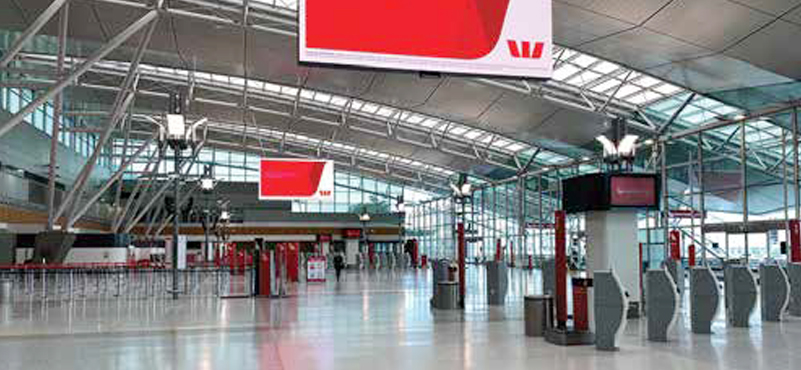The COVID-19 pandemic and the ensuing disruption has wrecked sectors across the spectrum. The aviation industry, already under duress, has been facing unprecedented strain with no-show because of lockdown measures. CAPA India recently conducted a webinar titled ‘Reinventing the airline business model in India’ to underline the criticality of recalibrating strategies and processes to ensure business viability and consequent profits in the longer-term. Kapil Kaul, Chief Executive Officer and Director, CAPA, highlighted the challenges and opportunities in an insightful presentation. Senior leaders from domestic aviation industry were in attendance to share their perspectives on a plethora of issues. Several issues were deliberated at length in a frank manner, which led to outlining the road ahead for the troubled sector. The panel discussion included K. Shyam Sundar, CEO, Air India Express; Willy Boulter, Chief Commercial Officer, IndiGo; Vinod Kannan, Chief Strategy Officer, Vistara TATA SIA Airlines; and Ankur Garg, Chief Commercial Officer, AirAsia India. We bring you edited excerpts from the detailed presentation and interaction:
The broader contours of the presentation
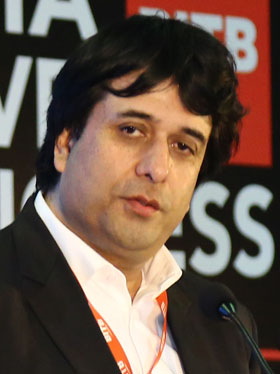
Kapil Kaul, CEO and Director, CAPA South Asia
The tenets of the presentation were primarily on CAPA’s learnings of the Indian market in the past twenty years. Kapil Kaul insisted that the thrust of the presentation’s findings was geared towards detailing the “history of experiences,” and not a commentary on the state of operations of the existing market players. Kaul noted that the Indian carriers needed to analyse the presentation’s recommendations and arguments to assess whether they couldleveragethem in any manner. The onus was on Indian airlines to take the pivots on which the new business model was to be created, to strategic levels, Kaul added.
Airlines needed to focus on corporate governance, aircraft ownership, ancillary revenue, cost optimisation, labour productivity, knowledge about customer markets, and account balance sheet to pivot towards the new business model, Kaul iterated. He shared that CAPA India was laying particular emphasis on corporate governance and leadership and was mooting a paper to deep-dive on the challenges, taking a comprehensive sectoral overview since the beginning of the 1990s.
Speaking on key strategic pivots to reinvent the airline business model in India, he advocated a gamut of structural changes, in the cost structures, governance, leadership and the broader ecosystem, among others.
The Indian aviation industry needed internal and external structural reforms to infuse vitality in the sector, the presentation outlined. Kaul suggested that beginnings of the challenge could be traced back to the early 1990s when the industry was deregulated. Most airlines, since then, had remained largely unviable, which had reflected in the shutting down of multiple carriers through the 1990s and later, he outlined. The failure, at times, was engineered owing to market dynamics of the competition in India, the presentation explained. The impact of the deregulation and the sequential folding up of carriers was felt by every critical stakeholder of the aviation ecosystem, including lending banks, airports, vendors, and others, the presentation suggested. However, despite the visible challenges and bottlenecks, there had been no concerted efforts to bring about institutional change, he said.
The more significant concern for the industry was COVID-19-induced challenges, which were likely to further dent business viability, and were expected to be more permanent, leaving lasting scars on the industry and the economy, the report suggested.
The prevalent issues in the Indian market were peculiar as most problems were self-created which explained why despite “solid fundamentals,” Indian carriers continually lost money, Kaul said, presenting the report’s findings. However, he expressed faith in the long-term sustainability of the sector, which hinged upon undertaking structural reforms to iron out issues thus far plaguing the industry. Kaul listed out critical strategic issues, namely corporate governance, institutional expertise and know-how, knowledge and data about the market and the customer, revenue maximisation, organisational restructuring, cost optimisation, policy and regulation tweaks, airline ownership costs, focus on ancillary revenue, a strong balance sheet, among others.
He went on to outline the challenges in specific areas, suggesting possible interventions to bring out qualitative changes in each of them. He believed that the COVID-19 disruption was an opportunity to recalibrate the cost base with vendors and labour. He further suggested bringing ATF under the ambit of GST, which could, in turn, reduce operational costs by almost 10 per cent.
Defining corporate governance
Kaul stressed on clearly defining the brand proposition for employees, consumers, shareholders, especially retail investors and other stakeholders. He noted that the need assumed considerable significance given Indian carriers’ consistent track record of losses in domestic operations.
Leveraging data to understand the consumer
Speaking on the importance of leveraging data on the consumer to gain a better understanding of their behaviour, he argued that airlines typically took product and pricing decisions based on “assumptions about customer preferences, behaviour, product preferences, price sensitivity and price-range by route, etc.” He stressed that the sector had failed to harness data and research to develop knowledge and insights about the customer. Little or no demographic or psychographic segmentation had been conducted to understand travel decisions, he suggested during the presentation. The lack of clarity on such issues had severe implications for customer acquisition, retention as well as pricing, revenue management, ancillaries, network planning, he noted.
Revenue maximisation
Indian carriers could maximise revenue by employing several measures, said Kaul, pointing out that higher yields could be generated from advance sales, estimated at 3-5 per cent for D-15 bookings, and 5 per cent for D-7 bookings. Revenue management was focused more on competitor pricing than on the passenger’s willingness to pay, Kaul said, presenting the report. Pointing out that stop transfer traffic was often sold at a discount to the two legs, even during peak periods, despite the additional costs associated with such traffic, Kaul argued that such measures needed to be addressed immediately. The report suggested that the inability to maintain yields was usually attributed to the competition, but the reason could have been internal. Kaul also noted that the pricing strategy was focused on the ticket price, rather than the total revenue that could be generated from a passenger through incremental ancillaries. “The ability to offer zero baggage fares could increase overall yields. If 30 per cent of the traffic was to purchase baggage, an estimated US$ 400 million could be generated,” he said, pointing out the untapped opportunities.
Cost optimisation
Kaul insisted that most Indian airlines were not implementing best practices to minimise costs in areas, such as aircraft ownership, aircraft utilisation, labour productivity, maintenance, distribution, planning, back office and administration. Lack of initiatives to address such evident gaping holes was adding to the challenges of Indian carriers in streamlining costs, consequently driving revenues, he said.
Ancillary earnings critical to airlines’ revenue in the USA and Europe

Ankur Garg, Chief Commercial Officer, AirAsia India
Referring to the findings in the presentation, which highlighted a higher revenue share among foreign carriers from ancillary revenue compared to their Indian counterparts, Ankur Garg, Chief Commercial Officer, AirAsia India, explained the reason behind the visible difference. He stressed that baggage charges and earnings thereof were a significant percentage of the total ancillary revenue among foreign carriers. Referring to Kapil Kaul’s presentation, Garg said that Kaul had hinted that there were regulations in the Indian context that mandated a specific baggage allowance as part of the airfare. He wondered about the extent to which such arrangements contributed to the yawning gap between the earnings of Indian and foreign carriers under the ‘ancillary income’ header.
Flying in India had traditionally been associated with luxury, before the arrival of LCCs in the market, and many benefits were supposed to be given as part of the airfare, he detailed. There had been a visible change in the Indian consumer that had now understood the concept of unbundling of services, which had been mustered well by foreign carriers, he said. “Still a lot of amenities and frills are expected to be given as complimentary, versus we see that global carriers are able to charge sums for them outside of India,” he said, asking Kaul about how much did these factors influenced the gap between Indian and foreign carriers.
Indian aviation ecosystem had policy-level restrictions, and a sense of entitlement which had started from the early 1990s and had carried on since then, Kaul explained. “The regulator is reluctant to liberalise key commercial decisions,” he said. He shared that the data with CAPA suggested that, on the travel of about 14 crore passengers, 3-4 crore people would carry baggage, adding that he was deliberately taking a lump sum figure. “If I look at only INR 500 for 15 kgs of baggage, you are looking at roughly about INR 400 million,” Kaul revealed. Tickets did not generate incomes for airlines in Europe and the USA, as they were majorly subsidised, he said, noting that the average fare of Ryanair had fallen to about 37 Euros per passenger, Kaul shared. However, ancillary income was contributing to about 17 Euros per passenger, which was subsidising fares but also accounting for the ancillaries, consequently impacting the bottom line positively, resulting in a profit of about 800-900 million Euros. He also noted that ancillaries varied from one market to the other and car rentals was a significant chunk of ancillaries in Europe. “What you see on the websites of Ryanair and EasyJet, they are akin to e-commerce platforms and offer everything possible – baggage fees, non-refundable fares and charge almost everything that a passenger could use,”Kaul said. He suggested that the customer service philosophy of these airlines was such that every service was a paid, including even boarding separately to get a seat of one’s preference. Car rentals aside, advertising inside and outside the aircraft also formed an essential part of the ancillary earnings in Europe, Kaul noted.
Indian carries are extremely brand conscious, time to unbundle services
“What we also see is a sense of clarity in terms of the customer proposition among carriers in Europe. In India, we see even LCCs being very brand-conscious,” he said, making a comparison. The core customer philosophy of Ryanair was the cheapest fare, high on-time performance, safety and security of the passengers, Kaul said, adding that any other service were add-ons. “To achieve those fare structures, they are focusing on ancillaries to a level that we have not seen. You would know that the owner of Ryanair says that we would want the passenger to fly free of cost and ancillaries contribute to the earnings. It is a completely different culture,” Kaul detailed. However, he clarified that CAPA India was not advocating that Indian carriers were going to match the levels of earning of their European and American counterparts. However, he believed that the change in policies was going to play an “immediate” role in altering the current revenue dynamics for the better.
Reflecting on the question of air travel being labelled as an elitist pursuit, Kaul said that LCCs had democratised travel in India. He noted that the LCC segment was focussed on regional integration and had created a “huge consumer surplus.” “However, from the perspective of policymaking, it is not seen as strategically as say the railways. When we look at the levels of contribution of not only Indian carriers but the entire aviation value chain, including foreign carriers flying into India, the cumulative contribution may be much higher than the railways,”Kaul asserted. While it was perceived to be elitists, it need not be viewed at strategic levels to remove some of the most pertinent bottlenecks, he added. The aviation sector was creating a “great social impact” like the telecom sector, Kaul said. He concurred with Garg that it was not viewed on those terms in the realm of policymaking.
Kaul expressed dismay at the industry’s inability in shaping some of the more needed policies. He suggested that while the sector had managed to shape the 5/20 rule, but had not focussed on solving its core issues. “Whether we are getting GST on ATF or we are getting these commercial liberalisations done, you need to attribute the lack of these structural changes in terms of the priorities of the promoters when dealing with the government,” Kaul said. He said some of the industry’s woes were self-inflicted and a result of its inability to get the core issues addressed, which assumed more significant concern in the present-day government. “The government is focussed on the ease of business. We saw our PM talk about structural changes in policiesand ease of doing business, but it does not seem to have changed anything, which is unfortunate,” he rued. He noted that airline promoters needed to take some responsibility for the failures in driving vital structural changes in the industry.
Garg believed that the policymaking needed to enable the aviation sector to unbundle some of the services. Airlines in India were not being able to charge for unbundled services either owing to policies or customer expectations, Garg said hoping that some of the CAPA India recommendations were going to be incorporated by policymakers. He commended CAPA India and Kaul for the insightful presentation and noted that vast swaths of data analysis had gone into the effort. Several pertinent and topical issues were raised in the elaborate presentation, he said.
Significant positives in the sector too while challenges remain
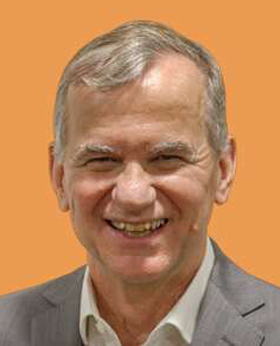
Willy Boulter, Chief Commercial Officer, IndiGo
Willy Boulter, Chief Commercial Officer, IndiGo, echoed Garg’s sentiments on the presentation and commended Kapil Kaul and the CAPA India team for the initiative. There were some fantastic positives in the Indian aviation in the last decade, said Willy Boulter, in his opening remarks. The most significant positive, according to Boulter, was that the cost of flying to a thousand kilometres was only INR 3000. “If you take out the effect of inflation, the cost of flying is about 48-49 per cent lower than what it was ten years ago. And I think that has been a fantastic contributor to the GDP of India,” Boulter argued. He suggested that it had been a two-way street where airlines had not only contributed to the GDP growth but also benefitted from it, insisting that while there had been some negatives but several positives were also equally visible.
He also pointed towards a very safe ecosystem where passenger safety had been maintained at the best possible levels, which was a credit to the regulators, Boulter added. “The incidents of major accidents in India are very low,” he said. He believed that Indian aviation had maintained a notable track-record on customer safety and on-time performance. “The Indian aviation industry may not be world-leading, but it is certainly in good shape,” Boulter contested.
Cargo is a critical driver of revenue: The deciding factor between profit and loss
He expressed dismay at the omission of the reference to “cargo” or “freight” in the presentation. The exclusion was particularly interesting when in the past two months, with almost no flying, cargo had played a crucial role for Indian airlines, he said. He mentioned that he had recently conversed with a developing airport and had mentioned that people often forgot about the contribution of cargo in airline operations. “Cargo is often the difference between profit and loss,” Boulter asserted. He said that the cargo side of aviation also needed to be factored-in while decoding the longer-term trajectory and shape of Indian aviation. “You end up operating at a lot of airports in India that do not have a cargo facility. That has to be addressed,” Boulter noted.
Boulter believed that much of the underperformance of the Indian aviation industry was owing to its unconsolidated structure. He drew an analogy of the aviation sector in India with the US aviation in the 1980s, which had similar troubles and witnessed multiple airlines folding up operations. Boulter shared that the scenario had transformed completely around the 2000s after structural issues were comprehensively addressed. “The airlines in the USA have started making enormous amounts of money recently,” he added.
Kaul clarified that the focus of the presentation was on best practices analysis and CAPA did not include cargo as a strategic component, especially for LCCs. “We struggle to find cargo as a dominant factor in the ancillaries of LCCs. It does not seem to get much focus,” Kaul clarified. He concurred that the growing financial gains from cargo operations were steadily placing it as an essential factor in airline operations, noting that the airline was making roughly USD 150 million from cargo operations. He shared that CAPA data suggested approximately 40 per cent inflation-adjusted fares, adding that the entire losses incurred by the Indian industry had gone in creating a consumer surplus. Whether the industry needed to create a consumer surplus with a “red on the balance sheet” was the question, ruminated Kaul. He alleged that the Indian carriers had demonstrated a tremendous appetite to lose money.
Consolidation of airlines is inevitable
“If I had to give an award to Indian carriers, they have a huge appetite for losses. Look at Kingfisher, Jet Airways, some of the Indian carriers from the 1990s, and even now,” Kaul asserted. He shared that CAPA India’s research on what it called the “super-cycle” of profits in the USA was the global financial meltdown in 2008. “That was the time when the industry started strategic consolidation. As a result, the numbers have fallen, and we had an extended cycle of profits, resulting in investment-grade airlines and Berkshire Hathaway investing in them till COVID-19 set in” Kaul informed. If Indian carriers continued to operate without any balance sheet, access to cash and assets to monetise and there were no regulatory barriers for them, airlines were never going to fold up, Kaul explained. “There are no incentives for airlines in India, that have no cash. It surprises me that airlines that have no balance sheets are able to expand. It has been happening since the 1990s, and I am not talking about a particular airline,” he added. Consolidation was not only critical but inevitable, Kaul believed. The structural changes in the industry were going to be much more profound, post the concentration, he said. The Indian aviation could be left with only three airlines, with a possibility of IndiGo having 70 per cent market share, Kaul envisaged, explaining the intricacies of such a development. This, in turn, could pose a regulatory challenge with the government or the airlines in operation as the airline with 70 per cent market share did not need to compete, he said, wondering the business case for other carriers in the fray. “Therefore, a post-COVID consolidation could raise strategic issues and pose fundamental questions about the nature of the industry,” he believed. He said that such a development could create a “growth-induced” coma for varying reasons but suggested that he envisaged a strategic consolidation to occur in the future. “It would depend on the players that remain in the market and build their case on profitability rather than numbers,” Kaul said.
Customer behaviour and expectations a significant reason behind the industry’s distress
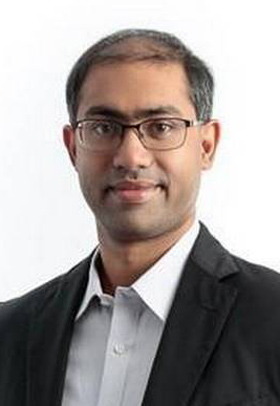
Vinod Kannan, Chief Strategy Officer, Vistara TATA SIA Airlines
Vinod Kannan, Chief Strategy Officer, Vistara TATA SIA Airlines, believed the plight of the airlines in India stemmed from consumer behaviour and the affinity to fly at competitive costs. No industry could expect to witness a 40 per cent drop in prices over the past 20-30 years, Kannan stressed. Commenting on the aspect of ownership versus leasing in the presentation, he said that it was a strategic decision as there were risks involved in owning aircraft as well. “There are residual risks. If you own aircraft now, with COVID-19 in full-swing, you have a bigger problem on your hands. So, there has to be a balance,” he countered.
Blockchain and robotics: how it may benefit Vistara
Vistara was analysing the specific use cases where the company could employ them, Kannan said when asked about using blockchain, robotics and other such cutting-edge technology and their impact on accruing benefits. He said he could not share the actual numbers or deliverables on them with the audience but suggested that their benefits were going to be visible for the consumer in due course.
Decoding the dollar problem: how the currency exchange rate mars the sectoral growth
Currency exchange was yet another pertinent problem, and there was not much that airlines could do about the issue, Kannan highlighted. One of the primary reasons for the struggle of Indian players emanated from the fact that a majority of costs involved in the operation of carriers were being incurred in USD, Kannan said. “With the continuously depreciating value of rupee, and most of us deal predominantly in the US currency, there are obvious challenges,” Kannan pointed out. He pondered if there was a solution to the problem as the issue was “way beyond” the aviation industry. Costs associated with fuel, leasing, overhauls, AMOs and others were being incurred in USD, he added. He argued that while companies could lower prices to the best possible levels, even a minor depreciation in the value of rupee could undo every effort to streamline costs. “You can be the slimmest, meanest organisation in the Indian context, it may not cut it for you, purely because of factors that are entirely out of your hands,” Kannan elucidated.
He agreed to the need for proper oversight and concurred to the importance of appointing independent directors. Underlining the unpredictable nature of the ongoing disruption, Kannan noted that none of the risk managers could predict what was currently unfolding in the industry. He said that the aviation industry was susceptible to cyclic disruptions, noting that such black swan events were going to occur in the future too. Airlines in India needed to revisit their asset utilisation strategies as they had a fundamental knack of ordering aircraft in good times and the other way round in difficult times, Kannan reflected.
Kaul clarified that he advocated a balanced portfolio of leased and owned aircraft rather than being overly dependent on a particular type. “There are risks in both but balancing the two is a prudent strategy,” Kaul noted. He shared that IndiGo had emphasised a few years ago about being better placed than the competition with owned aircraft when fuel prices went north.
Kaul noted that the currency issue was a global concern, except perhaps for the USA and it required attention. The government had started looking into “rupee leasing” and “hedging,” other than airlines using their internal expertise to manage the currency challenges. “But with the headwinds that the currency issue creates, which is now going to depreciate further, the concern is valid,” said Kaul, concurring to Kannan’s concern.
Premium economy and how it was faring across the board
There had been a visible spike in demand for full-service flying, especially after the exit of Jet Airways from the market, Kannan revealed. There had been a good uptake of the premium economy segment on international routes, which was on expected lines, he said. While there had been some growth in the domestic sector, too, the uptake on some local routes was “very poor,” he shared. However, there was an encouraging growth, which was expected to pick up after the COVID-19 subsided, Kannan noted.
Obsession with load factors is an unhealthy trend
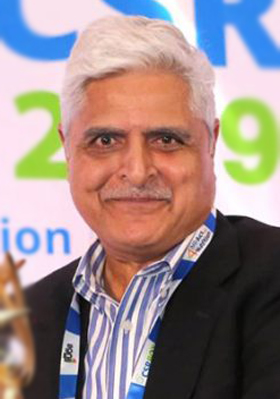
K. Shyam Sundar, CEO, Air India Express
Shyam Sundar, CEO, Air India Express, suggested that there had been little clarity on the unit revenue or cost. The industry needed to be “obsessed” with the issue as it had witnessed a “phenomenal” growth of 25-30 per cent. “When you have such growth, there is going to be some distortions, because there is an over-eagerness to occupy the space,” he explained. He pondered the reasons behind the sector’s over-eagerness, suggesting that there were multiple constraints in the air and on the ground, directly impacting the “on-time” performance and other issues concerning the customer service. Enumerating the challenges facing the Indian aviation industry, he said that excessive costs related togovernments and airports were directly impacting the sector’s viability. He noted that the COVID-19 pandemic and the ensuing disruption was afantastic opportunity for course correction. “It is an opportunity to bring about a correction in expectations and costs and bring them down to actual levels. There is a growing realisation within the cross-section of employees about increasing the productivity levels,” Sundar explained. He underlined the criticality of employee productivity and said that managements needed to be more concerned on the issue. “There is a realisation among all strata of employees, from management to further down, that things are not going to be same anymore,” Sundar stressed.
A marked shift on the anvil
He professed a marked shift in the sector and attributed the change to the erosion of the market segmentation. He also pointed out towards “uncommonly high load factors” of 92-93 per cent for airlines with such low yields. He cautioned chasing such high load factors continually and believed it was not a matter of joy for airlines. “You are not making money at 93 per cent load factor, but you buy another aircraft to showcase another such high load factor, which is a fundamental issue that needs to be addressed,” Sundar substantiated.
Access to capital and challenges therein: will the infra tag suffice?
For obvious reasons of not being able to generate revenue, airlines were not being able to access capital from banks, Sundar said, batting for the airline industry to be given the ‘infrastructure’ status. It could enable airlines to become financially robust and more responsible, as they were then going to be obligated to pay back the loans. Responding to the assertion, Kaul shared that no country in the world had accorded ‘infra’ status to the airline industry and the subject had been brought to the government’s notice first in 2007-08.
On outsourcing ground handling to third parties
Shyam Sundar said that most of the ground handling was being outsourced while some airlines were deploying their staff in the terminal building. Boulter confessed he was not a subject expert but believed it to be linked more to the taxation/GST issue. He noted that there was no reason why ground handling could not be outsourced. “It is just a matter of cost-benefit analysis,” he said, indicating that airlines would weigh their option depending on the expenses incurred in both the ways.



